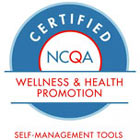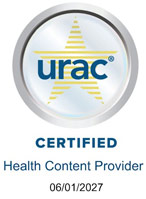General guidelines for soy allergy
Your child has been diagnosed with a soy allergy. This means that your child's immune system overreacts to soy proteins. The allergy may go away when your child is older. But as long as your child has the allergy, they can't have any foods or products containing soy. Soy is a common ingredient in infant formulas and processed foods. The list below describes foods that your child can have and foods to stay away from. The list may not include all foods that contain soy proteins.
The Food Allergen Labeling and Consumer Protection Act (FALCPA) is a law that requires U.S. packaged foods to state clearly on the label if they contain soy or a soy-based ingredient.
How to read a label for a soy-free diet
For any FDA-regulated food, the word "soy" must appear somewhere on the label. This can be in the ingredient list. Or there may be a special allergen label, such as "contains soy." Always read the entire ingredient label. Don't give your child foods with any of these ingredients:
-
Edamame
-
Hydrolyzed soy protein
-
Miso
-
Natto
-
Shoyu
-
Soy albumin
-
Soy cheese
-
Soy fiber
-
Soy flour
-
Soy grits
-
Soy ice cream
-
Soy nuts
-
Soy milk
-
Soy sprouts
-
Soy protein concentrate
-
Soy protein isolate
-
Soy sauce
-
Soy sprouts
-
Soy yogurt
-
Soya
-
Soybean (curd, granules)
-
Tamari
-
Tempeh
-
Textured vegetable protein (TVP)
-
Tofu
Foods that don't contain soy could be contaminated during manufacturing. Advisory statements are not regulated by the FDA. They are voluntary. These include labels such as "processed in a facility that also processes soy." Or "made on shared equipment." Ask your child's healthcare provider if your child can eat foods with these labels. Or if your child should stay away from them.
Other possible sources of soy or soy products
-
Asian food
-
Flavorings
-
Vitamin E, which contains soybean oil
-
Hydrolyzed plant protein
-
Hydrolyzed vegetable protein
-
Natural flavorings
-
Vegetable broth
-
Vegetable gum
-
Vegetable starch
Important points
The risk for an allergic reaction to soy lecithin and soy oils is low. But a reaction can occur. Studies show that most people who have an allergy to soy may eat products that contain soy lecithin and soy oils. This is because these substances are fat-based, and people with allergies react to the protein portion of the food. Ask your child's healthcare provider if your child should stay away from soy lecithin and soy oils.
There are some foods and products that are not covered by the FALCPA law. These include:
-
Foods that are not regulated by the FDA
-
Cosmetics and personal care items
-
Prescription and over-the-counter medicines and supplements
-
Toys, crafts, pet foods
When eating out with your child
-
Always carry 2 doses of epinephrine. Make sure you and those close to your child know how to use it.
-
Have your child wear a medical alert bracelet or necklace with their allergy information.
-
If your child doesn't have epinephrine, talk with your child's healthcare provider. Ask if you should carry it.
-
In a restaurant, food may be cross-contaminated with soy. Always tell your server about your child's food allergy.
-
Always read food labels. And always ask about ingredients at restaurants. Do this even if these are foods that your child has eaten in the past.
-
Don't eat at buffets with soy. This reduces the risk for cross-contaminated foods from shared utensils.
Featured in

